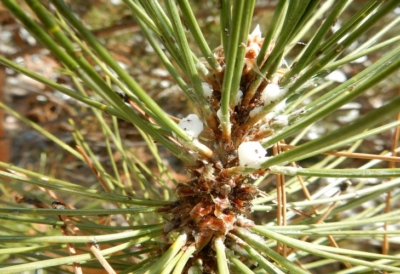You will usually find giant conifer aphids in large groups, feeding on the branches, twigs, trunks and even roots of a tree. There are different species of giant conifer aphids, choosing specific species of 
The pests are soft-bodied, about a quarter-inch long. They’re dark in color with long legs and piercing-sucking mouths. You will usually see tube-like structures along the abdomens. Some of the creatures wil have wings, but that’s not the case for all. Several generations of the pests will appear in a single year and the females will give birth to live young, except in the summer. The creatures molt throughout the year, getting larger as they do.
If your giant conifer aphids infestation is large, you will usually see the leaves start to turn yellow. It’s not actually the creatures that cause the major damage; it’s the honeydew they leave behind. This is a clear, sticky liquid that can prevent the trees from getting all nutrient needs and can lead to sooty mold growth.
Most of the time you won’t need to manage the infestations of the creatures. Aphids have plenty of natural enemies that will help to keep the numbers of colonies under control. Some of the natural enemies include ladybeetles, parasitic wasps, and lacewings. You’ll usually not notice damage to the trees until the conifer aphid population has reduced. The only time you’ll need to use insecticides is if the aphid population grows out of control. You’ll want to check for the natural enemies first. The best time to use insecticides is during the early spring, which is when populations usually start to rise.
If you need help with controlling giant conifer aphids, give SprayTech a call at (720)248-0000.
Comments are closed.